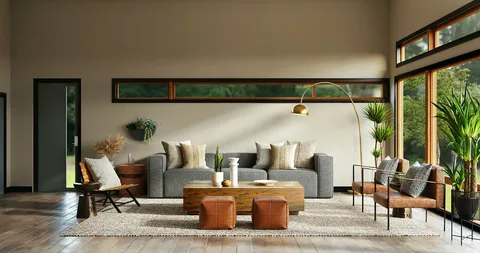Furniture has always played a central role in shaping the way we live, work, and interact with our surroundings. From the humble wooden stools of ancient civilizations to the sleek, multifunctional pieces in today’s smart homes, the transformation of furniture is a fascinating journey. The evolution of furniture: from ancient craftsmanship to modern design reflects not only changes in aesthetics but also shifts in culture, technology, and human needs.
Ancient Beginnings: Utility Meets Art
In early human history, furniture was created out of necessity. Ancient Egyptians, for instance, crafted chairs, beds, and tables using wood, ivory, and even gold. These pieces were not only functional but also symbolized status and wealth. Carvings and ornamentation reflected religious and social influences, emphasizing craftsmanship over comfort.
Similarly, in ancient Greece and Rome, furniture design became more refined. The Greeks favored elegance and proportion, while Romans emphasized luxury and opulence. Their use of bronze, marble, and fine woods illustrates how furniture served both utilitarian and decorative purposes.
The Middle Ages to the Renaissance: A Shift in Style
During the Middle Ages, European furniture became heavier and more robust. Gothic influences brought high-backed chairs and intricately carved chests, often serving dual purposes for storage and seating. As societies stabilized, the Renaissance ushered in an era of artistic revival. Furniture became a canvas for skilled artisans to express humanist ideals, drawing inspiration from classical antiquity.
In this period, the evolution of furniture: from ancient craftsmanship to modern design started to take form, as furniture began to reflect not just function, but also taste, sophistication, and intellectual pursuits.
Industrial Revolution: Mass Production and Accessibility
The 18th and 19th centuries marked a turning point. The Industrial Revolution introduced machinery that could replicate designs quickly and affordably. This democratized access to furniture, making once-exclusive designs available to the emerging middle class. While some critics lamented the loss of handcrafted uniqueness, others embraced the efficiency and consistency of machine-made pieces.
Furniture styles also diversified—Victorian, Art Nouveau, and Art Deco each represented evolving tastes and societal norms. Comfort and style began to merge, signaling the modern consumer’s growing desire for both.
Modern and Contemporary Design: Function, Form, and Innovation
In the 20th century, modernism revolutionized design. Influenced by movements like Bauhaus and De Stijl, designers like Le Corbusier, Charles and Ray Eames, and Mies van der Rohe prioritized simplicity, function, and clean lines. Materials such as steel, plastic, and molded plywood introduced new possibilities.
Today, the evolution of furniture: from ancient craftsmanship to modern design continues in the form of sustainable materials, ergonomic innovations, and smart technologies. Furniture is no longer just static—it adapts, moves, and even connects to the internet. The rise of minimalism and multi-functionality reflects a fast-paced, space-conscious world.
Conclusion: A Timeless Journey of Human Expression
From the ornate, symbolic creations of ancient civilizations to the sleek, adaptive pieces of modern homes, the evolution of furniture: from ancient craftsmanship to modern design mirrors human progress. It tells a story of changing lifestyles, advancing technology, and enduring creativity. As we look to the future, furniture will continue to evolve, blending tradition with innovation to meet the ever-shifting needs of society.

